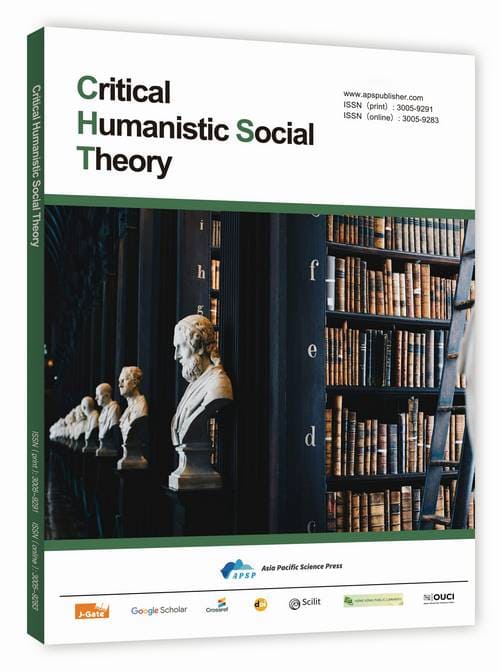Research on the Driving Effect of R&D Investment by University Researchers on National Social Science Fund Projects from the Perspective of Machine Learning
Based on Panel Data of 31 Provinces from 2003 to 2022
DOI:
https://doi.org/10.62177/chst.v2i3.565Keywords:
Educational Administration, R&D Achievement Transformation, Machine Learning, Full-Time Equivalent R&D Personnel, National Social Science Fund ProjectAbstract
This study investigates the impact of university-based full-time equivalent (FTE) research and development (R&D) personnel on the productivity of National Social Science Fund (NSSF) projects in China. Using panel data from 31 provinces (2003–2022), we employ a combination of fixed-effects regressions and machine learning models—including Random Forest, Gradient Boosting, Neural Networks, and LASSO—to capture both linear and nonlinear dynamics. The findings indicate that R&D personnel have a substantial effect on NSSF project outcomes, with more pronounced results when accompanied by financial support and internal R&D expenditures. Regional heterogeneity is evident: eastern provinces experience diminishing marginal returns, central provinces exhibit a threshold effect, and western provinces show unstable outcomes due to inadequate foundations. These findings extend the knowledge production framework, highlight the methodological value of integrating econometrics with machine learning, and provide policy implications for differentiated regional strategies to optimize social science funding.
Downloads
References
Li, C. (2018). The role transformation of universities in the national innovation system. Higher Education Research, 39(5), 20–27.
Becker, G. S. (1964). Human Capital: A Theoretical and Empirical Analysis, with Special Reference to Education. University of Chicago Press.
Mansfield, E. (1991). Academic research and industrial innovation. Research Policy, 20(1), 1–12.
Griliches, Z. (1990). Patent statistics as economic indicators: A survey. Journal of Economic Literature, 28(4), 1661–1707.
Crespi, G., Geuna, A., & Nesta, L. J. J. (2011). The mobility of university inventors in Europe. Journal of Technology Transfer, 36(3), 297–320.
Yang, K. (2020). Institutional logic of the National Social Science Fund and the development of social sciences. Social Science Front, (2), 10–18.
Zhang, X., & Liu, S. (2019). Evolution and impact of evaluation mechanisms in National Social Science Fund projects. Chinese Social Science Evaluation, (1), 54–66.
OECD. (2021). Main Science and Technology Indicators. OECD Publishing.
Aghion, P., Dewatripont, M., & Stein, J. C. (2008). Academic freedom, private-sector focus, and the process of innovation. RAND Journal of Economics, 39(3), 617–635.
Liu, Z., & Hu, J. (2017). Constructing an evaluation index system for social science research. Educational Research, (12), 44–51.
Latour, B., & Woolgar, S. (1986). Laboratory Life: The Construction of Scientific Facts (2nd ed.). Princeton University Press.
Xu, F., & Wang, L. (2020). Fiscal support and research efficiency in social sciences: Regional evidence from China. China Soft Science, (7), 101–110.
Breiman, L. (2001). Random forests. Machine Learning, 45(1), 5–32.
Bzdok, D., Altman, N., & Krzywinski, M. (2018). Statistics versus machine learning. Nature Methods, 15(4), 233–234.
Yu, Y., Wang, Y., & Xu, A. (2024). Research on the Driving Effect of R&D Investment by University Researchers on National Social Science Fund Projects from the Perspective of Machine Learning. Critical Humanistic Social Theory, 1(3).
Tibshirani, R. (1996). Regression shrinkage and selection via the lasso. Journal of the Royal Statistical Society: Series B (Methodological), 58(1), 267–288.
Zhang, S., & Zheng, X. (2021). Regional distribution patterns of university research resources in China. Science of Science and Management of S&T, (3), 85–93.
Liang, Z., & Liu, Y. (2022). Regional R&D inequality in China’s higher education. Higher Education Policy, 35(1), 75–93.
Downloads
How to Cite
Issue
Section
License
Copyright (c) 2025 Yile Yu; Yi Wang

This work is licensed under a Creative Commons Attribution-NonCommercial 4.0 International License.
DATE
Accepted: 2025-09-09
Published: 2025-09-19
















